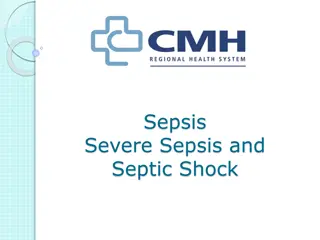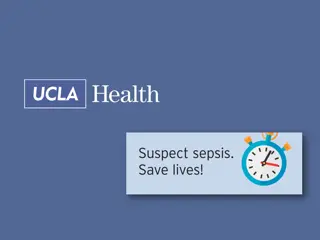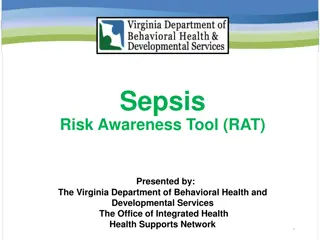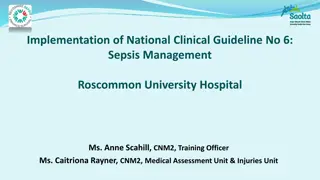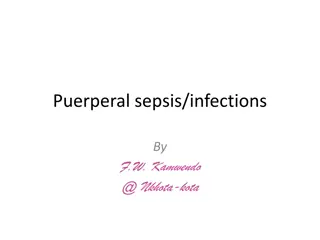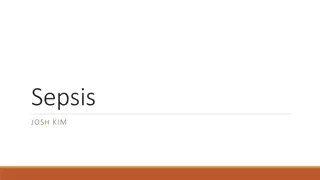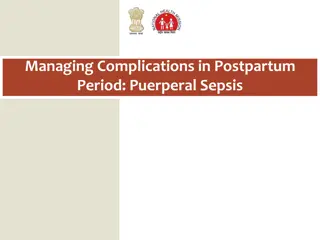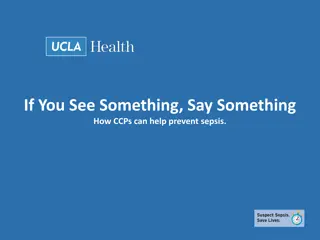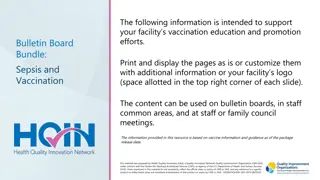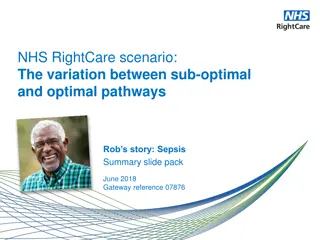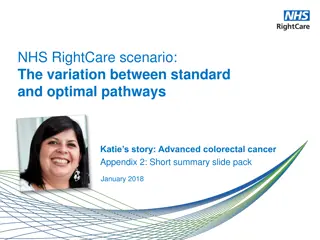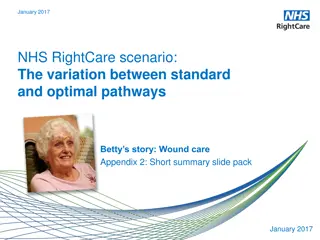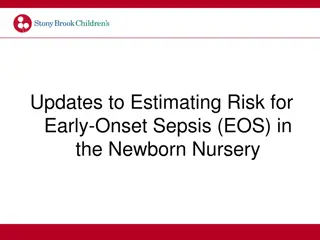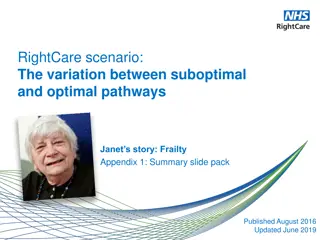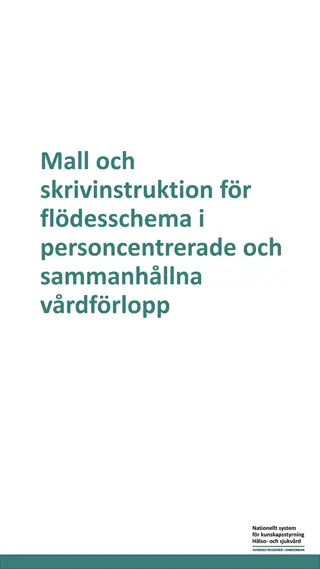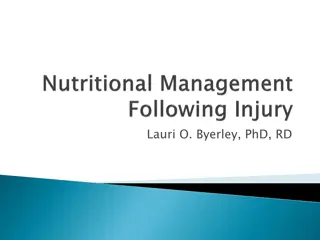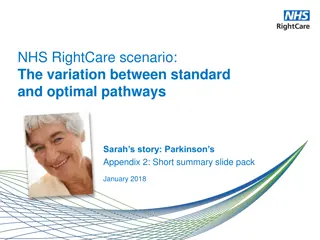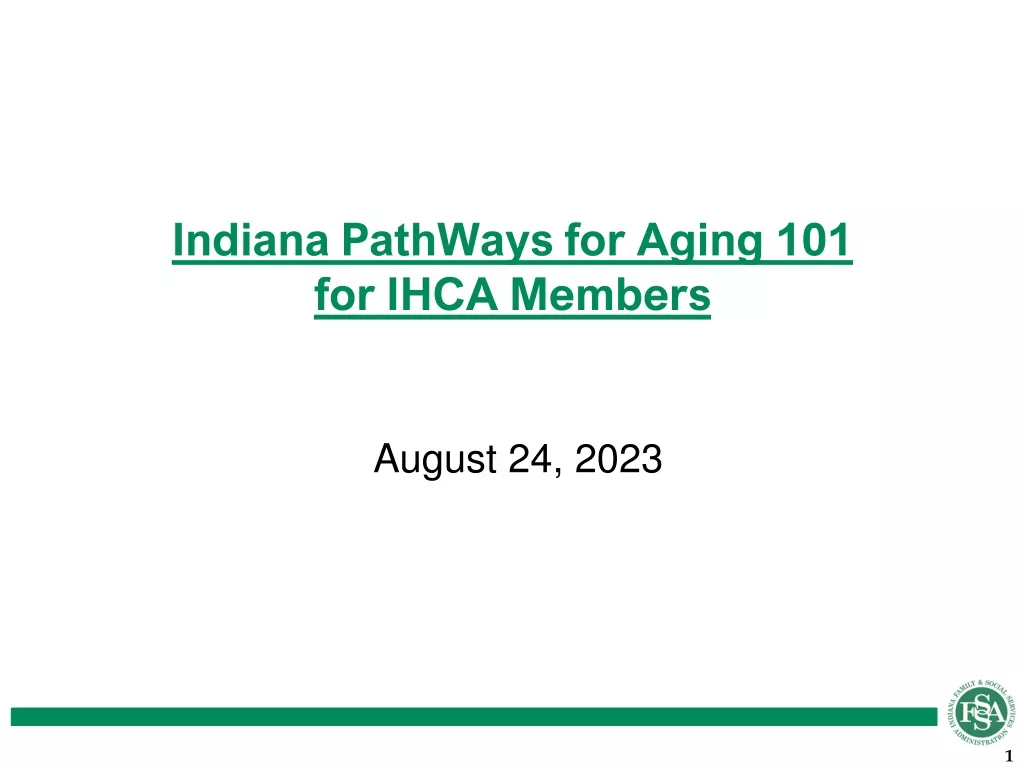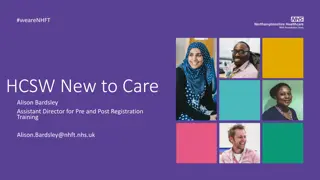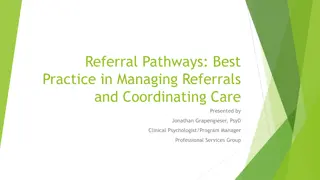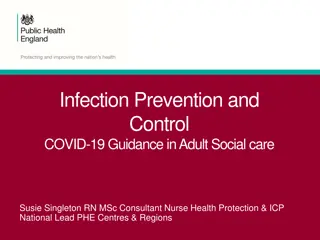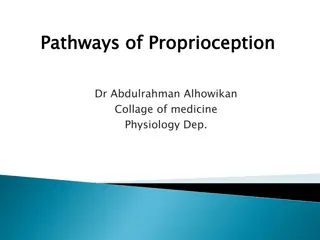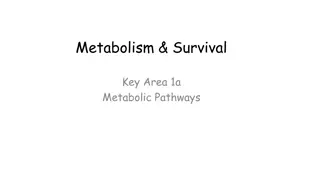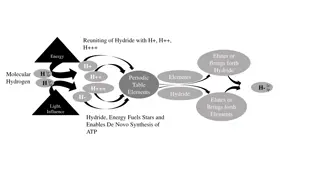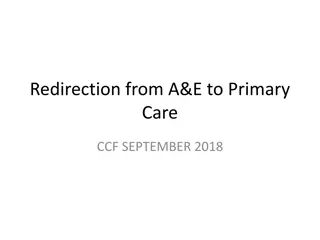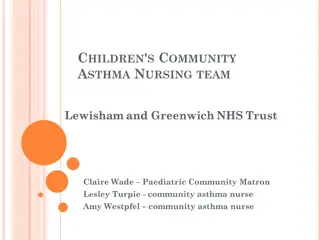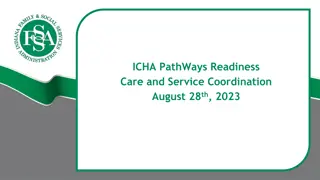Contrasting Pathways in Sepsis Care: Rob's Journey
Rob's story illustrates the stark contrast between sub-optimal and optimal pathways in managing sepsis. Delayed recognition and treatment in the sub-optimal pathway led to severe complications, whereas timely intervention in the optimal pathway resulted in improved outcomes. The importance of early diagnosis, appropriate monitoring, and prompt medical intervention is highlighted through Rob's experience.
Download Presentation

Please find below an Image/Link to download the presentation.
The content on the website is provided AS IS for your information and personal use only. It may not be sold, licensed, or shared on other websites without obtaining consent from the author. Download presentation by click this link. If you encounter any issues during the download, it is possible that the publisher has removed the file from their server.
E N D
Presentation Transcript
NHS RightCare scenario: The variation between sub-optimal and optimal pathways Rob s story: Sepsis Short summary slide pack June 2018 Gateway reference: 07876
Rob and the sub-optimal pathway Day 9 - Post operation - cough Dry cough, mild fever, no real concerns with family as there is a bug going around . Day 14 Cough persisting Family now concerned as Rob has not been eating and feels fluey . GP contacted. Day 14 GP tel. consultation GP suspects viral bronchitis - should resolve itself. Call back if no better or if it gets worse. Day 16 Concern and GP appt Family are now very concerned as Rob is breathless and vomiting. GP surgery arrange for an afternoon appt. GP is shocked by Rob s condition and calls for an ambulance. After three hours waiting GP calls 999 for a blue light response. Double technician ambulance crew arrive and take Rob to the surgical assessment unit where he is a bit slow to respond . Day 16 Ambulance Day 16 Ward admission Not handed over to staff and the GP observations are missing. Day 16 - Observations Baseline observations done by HCA. NEWS score calculated and oxygen given. Junior doctor alerted but the registrar is busy. Later the junior doctor administers stat bolus 500ml of glucose 5% over five minutes but the cause is still unclear. Day 16 Serious deterioration Mental state is deteriorating and the registrar suspects pneumonia. Rob is now breathless, shocked and close to collapse. ICU ventilate, give antibiotics, fluid resuscitation and inotropes over a five day period. Day 27 Discharged home After a further stay in the General Medical Ward Rob is discharged home. Day 29 GP follow-up Rob is struggling to walk and needs a stick. His memory is poor and he still has a persistent cough and is still breathless. Day 90 Limited recovery Rob can now undertake small amounts of activity but needs frequent rest. His sleep is disturbed and his moods are low with disturbing flashbacks on a regular basis. His family are seriously concerned about Rob s mental health; the whole family are feeling the strain. Day 100 Legal action The family write a formal letter of complaint to the GP threatening legal action.
The levels of NEWS2 scores and associated risk Date Time Clinical concern Low NEWS Post op discharge Unknown 14 days pre admission 2 days pre admission Admission day 1 GP call Low Unknown Sub-optimal case 1545 2015 2048 2200 2300 2330 GP appointment Ambulance SAU arrival Surgical review Medical review ICU Discharge High High High High High High Low Unknown Unknown Unknown Unknown Unknown Unknown Unknown Admission day 12 Date Time Clinical concern NEWS2 Post op discharge Low 0 14 days pre admission First GP appointment Medium Not calculated 2 days pre admission Optimal case 0900 Second GP appointment High 10 Admission day 1 0930 1000 1100 1200 Ambulance ED Resus ED Resus ED Resus HDU Ward Very High Extreme Extreme Extreme High Medium 13 14 12 15 10 3 Admission Day 2 Admission Day 3
Rob and the optimal pathway Day 9 Post operation-cough Dry cough, mild fever, no real concerns with family as there is a bug going around . Day 14 Cough persisting Family now concerned as Rob has not been eating and feels fluey . GP contacted as aware of Thromboembolism and sepsis from the hospital discharge information post surgery. Day 14 GP tel. consultation Receptionist notes sepsis language from the family and arranges emergency GP appt. GP records vital stats and provides leaflet doesn t justify antibiotics at this stage. Day 16 Concern and GP appt. Family are now very concerned as Rob is breathless and vomiting. Surgery advises to come in immediately. GP is concerned by Rob s condition and calls the medical admissions team and ambulance with a NEWS score of 10 and sepsis suspected , plus prepares a detailed letter with deterioration information for the ambulance crew. Day 16 Ambulance and A&E Ambulance crew with paramedic arrive and take Rob to the Emergency Unit . He then receives the sepsis six and has a chest X-ray, plus contact with the ITU outreach team who agree HDU admission is required antibiotics administered. Moved to General Medical Ward after one day in HDU. Day 17 Ward admission Day 18 - Observations Rob is now looking well enough for discharge antibiotics reviewed and changed. Day 19 Serious deterioration Discharged home with discharge summary (sepsis and pneumonia) and anticipated recovery path. Day 20 GP follow-up GP explains what recovery will be like and arranges vaccination in the near future the family are very grateful for the GP s prompt action. Day 90 Recovery Pneumonia has completely resolved and Rob has just returned from a family wedding and a three week holiday in Trinidad. The practice undertakes an SEA review of the case and recognises the value of a sepsis aware practice and the use of physiology and communication to improve patient outcomes. Day 100 GP practice reflection
Financial information Optimal Analysis by Cost Category Sub- optimal Optimal % Primary care management 238 451 190% Urgent and Emergency care 247 247 100% Secondary care management 7,518 2,318 31% 8,003 3,016 38% Grand total The key improvement is due to prompt diagnosis and good communication between healthcare professionals which results in prompt administration of antibiotics. This significantly reduces the volume and type of bed days in hospital from 11 days, including five in ICU, in the suboptimal case down to four days, with one in ICU, in the optimal case. Primary care then invests much more significantly in post sepsis aftercare with practice visits every two weeks for the first three months after hospital discharge. Close monitoring post-sepsis is very important. This shift in focus represents improved value for money, better use of healthcare resources and most importantly a significant improvement in Rob s clinical outcome and quality of life. NB: Please refer to the detailed scenario for data and financial analysis details and caveats.
Further information For more information about Rob s journey, NHS RightCare or the sepsis programme you can: Email: rightcare@nhs.net england.clinicalpolicy@nhs.net Visit: www.england.nhs.uk/rightcare www.england.nhs.uk/?s=sepsis Tweet: @NHSRightCare Please note: Appendices to support the main scenario document and the PowerPoint summaries can be found at https://www.england.nhs.uk/rightcare/products/ltc/sepsis-scenario/


